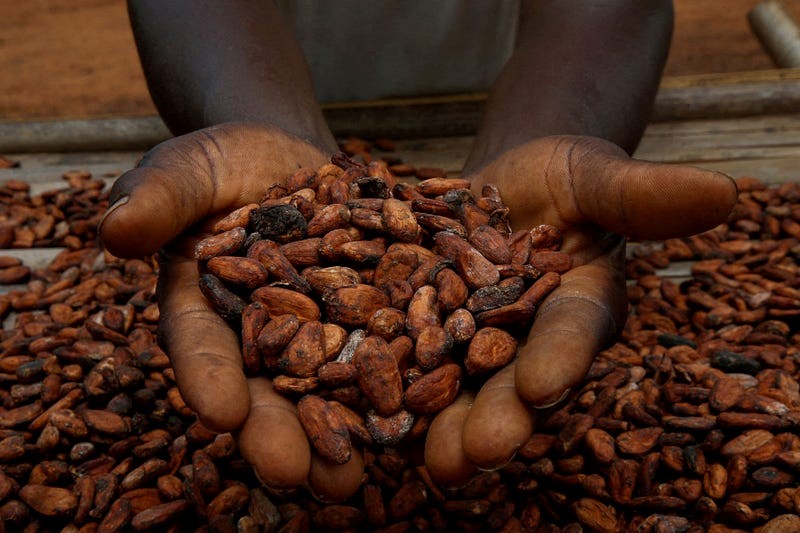Cocoa Prices Surge Amid Adverse Weather in West Africa

Cocoa prices rallied sharply over the past week, climbing to $7,420 per ton at the New York Exchange, as weather-related challenges in West Africa disrupted production and supplies.
The commodity, which recently touched a 52-week low, has been buoyed by concerns over excessive rainfall in Ivory Coast and prolonged dry conditions in Ghana and Nigeria.
Excessive rains in Ivory Coast, the world’s largest cocoa producer, have slowed farm activities and reduced the flow of beans from plantations to export ports. In contrast, insufficient rainfall in Ghana and Nigeria has caused cocoa pods to wither, damaging crops and heightening concerns over output ahead of the October main harvest season.
The Nigerian Cocoa Association projects a decline in the country’s production for the 2025–2026 season, estimating output at 305,000 metric tons, an 11 percent drop from the 344,000 metric tons recorded in 2024–2025.
However, Nigeria’s cocoa exports showed resilience, rising 0.9 percent year-on-year in June to 14,597 metric tons.
Despite production challenges, Nigeria recorded strong financial gains from cocoa exports earlier this year. According to investment firm Norrenberger, the nation generated N1.23 trillion in the first quarter of 2025, a 220 percent increase from the N384 billion achieved in the same period of 2024. Meanwhile, Nigeria has also emerged as the largest African importer of Cameroonian cocoa, purchasing 2,100 metric tons — representing 1.09 percent of Cameroon’s total cocoa exports — after the close of the 2024–2025 season in July, figures from the National Cocoa and Coffee Board (ONCC) show.
Industry analysts warn that the situation could worsen as cocoa-growing regions endure their driest 60-day spell since 1979, according to the Commodity Weather Group. The lack of rainfall is raising fears about cocoa pod retention on trees ahead of the main crop harvest.
Additionally, the spread of black pod disease in Ghana and Nigeria, linked to cold and dry conditions, has further intensified supply risks.
Concerns about the mid-crop in Ivory Coast, typically harvested from April to September, have also added pressure to global prices.
Rabobank notes that late rains hindered crop growth, lowering the quality of the mid-crop beans. While smaller than the main harvest, the mid-crop remains a vital contributor to annual supply.
With the October harvest looming, market watchers expect cocoa prices to remain volatile as weather conditions across West Africa continue to threaten yields and disrupt global supply chains.









